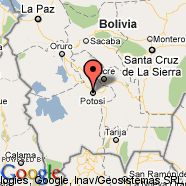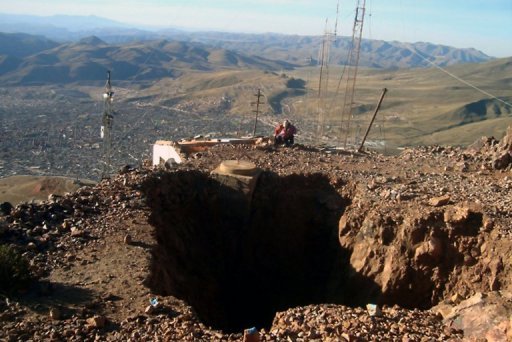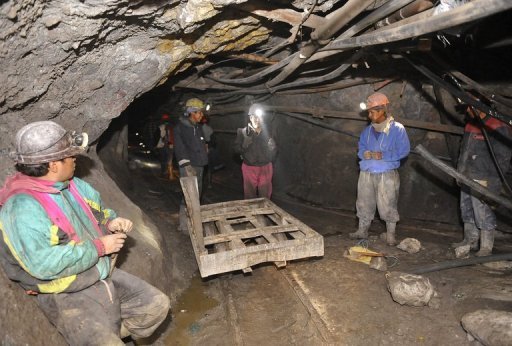
(above) Cerro Rico is in critical condition from sections collapsing and landslides. Photo: AFP
Bolivian silver mountain risks collapse
October 21, 2010 - AFP
By Jose Arturo Cardenas
POTOSI, Bolivia — The mountain holding one of the world's greatest silver deposits is at risk of collapse after five centuries of exploitation, Bolivian officials say, calling for moves to save the historic site.
"It looks like an hour glass that is slowly sinking," said Celestino Condori, president of the civil committee of Potosi, an organization dedicated to enforcing sustainable procedures for the rampant mining that is hollowing out the mountain in a bid to reach its silver, lead, zinc and tin.

Potosi, once South America's wealthiest city due to the silver mine within the conical mountain which looms above it, is now even more treacherous for miners than usual, because of regular landslides prompted by some 90 kilometers (55 miles) of tunnels within the hulking Cerro Rico, or "rich hill".
Around 12,000 workers enter the mines each day, including many children from poverty-stricken homes who lie about their age in order to earn a daily wage of just over one dollar.
The vast wealth hidden within the hill was once said to be enough to build a bridge of silver from this town all the way to Spain -- thousands of kilometers (miles) away across the South American continent and the Atlantic Ocean.
(below) Some 4,300 tons of the Cerro Rico mountain are removed every day. Photo: AFP

The process sees some 4,300 tons of mountain -- earth and precious minerals -- removed every day. After five centuries of continuous operation, there are now 619 open pit mines, including 120 that are currently in use, and an extensive tunnel network.
Landslides, tunnel collapses, falling rocks and the unpredictable release of toxic gases have led to 20 miner deaths since early 2009, according to the Federation of Mining Cooperatives (Fedecomin).
On Tuesday a 17-year-old miner died after inhaling a lethal dose of carbon monoxide while retrieving zinc deep in the Cerro Rico hillside.
(below) Mining generates billions of dollars in revenue for mineral-rich Bolivia. Photo: AFP

The deaths have left Fedecomin head Julio Quinones wondering: "What is the national government doing" to help?
The demand for better safety regulations and to prevent further deterioration of Cerro Rico kicked off a 19-day civic strike in Potosi in August, prompting the government to launch a study on how to save the mountain.
The dismay of local residents and officials alike at the reticence of President Evo Morales to uphold stricter regulations has only sharpened, however, since the triumphant rescue this month of 33 trapped miners in neighboring Chile.
Morales gave Carlos Mamani, the 23-year-old Bolivian miner who was trapped with his Chilean comrades for a record 69 days, a hero's welcome this week at the Quemado presidential palace in La Paz.
"What bothers us," Quinones told AFP, "is that the president can mobilize immediately to get involved (in the Chilean saga), but when such accidents occur in Potosi or elsewhere in Bolivia, which sees collapses with tragic results, (Morales) never gets involved."
(below) Historic Bolivian silver mine in peril. Photo: AFP

Mining generates billions of dollars in revenue for mineral-rich Bolivia, and the government has taken an especially hands-off approach to this historic symbol of wealth, in operation since 1545.
First exploited by the Incas, it was taken over by Spanish colonists and their tens of thousands of indigenous and African slaves, then the Bolivian government and now by private firms.
Despite the centuries of mining, authorities however estimate vast riches still remain to be found.
Arnulfo Gutierrez, secretary of mines for the Potosi department, told AFP the exploitation has "exposed eight levels of the mountain," each measuring some 30 meters (98 feet) deep within the structure, yet there are still "10 levels more" containing the precious minerals.
"The mountain is huge, and its wealth is incalculable," he said.